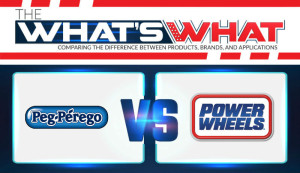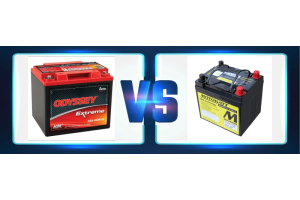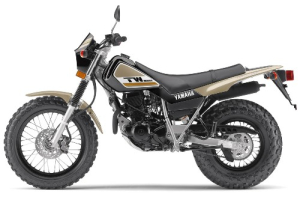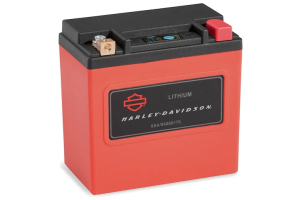Comparing Power Wheels and Peg Perego Ride-On-Toys from the Aspect of the Battery
 When comparing Power Wheels to Peg Perego there is more than meets the eye. I don’t think it’s necessarily right to put it in the context of which is better. Both brands have a rich history and both have carved out a name for themselves in the ride-on-toy marketplace. Many of today’s parents, including myself, grew up with these battery powered toys and can recall our favorites. The iconic Power Wheels Barbie Jeep is matched by the ever popular Peg Perego John Deere tractor. Each has their list of ‘must have’ replicas from Harley and Kawasaki motorcycles to Ford Escalades, Jeep Wranglers, John Deere Gators and Polaris Sportsman ATVs. But I bet when you bought the toy, this thought never crossed your mind: How much will a replacement battery cost? Perhaps after having the toy for a few months you pondered if there was another battery that would last longer? Or if they could make the darn things faster? Allow us to compare the Peg Perego and Power Wheels toys from the aspect of the battery.
When comparing Power Wheels to Peg Perego there is more than meets the eye. I don’t think it’s necessarily right to put it in the context of which is better. Both brands have a rich history and both have carved out a name for themselves in the ride-on-toy marketplace. Many of today’s parents, including myself, grew up with these battery powered toys and can recall our favorites. The iconic Power Wheels Barbie Jeep is matched by the ever popular Peg Perego John Deere tractor. Each has their list of ‘must have’ replicas from Harley and Kawasaki motorcycles to Ford Escalades, Jeep Wranglers, John Deere Gators and Polaris Sportsman ATVs. But I bet when you bought the toy, this thought never crossed your mind: How much will a replacement battery cost? Perhaps after having the toy for a few months you pondered if there was another battery that would last longer? Or if they could make the darn things faster? Allow us to compare the Peg Perego and Power Wheels toys from the aspect of the battery.
But First, A Brief Ride-On-Toy History
In July we wrote about the Power Wheels story. The blog begins with how a small company from Indiana called Pines of America, was purchased by Kransco back in the 1980’s. When Mattel later purchased the company their marketing genius took over and sales skyrocketed. Power Wheels as they would be known, under the Fisher-Price division at Mattel, became a household name. It may not be farfetched to say Power Wheels is to battery powered toys as Kleenex is to facial tissue and Google is to search. More often than not parents refer to their ride-on-toy generically as a Power Wheels.
Would you believe me if I told you the Peg Perego battery powered toys also have their origins in the same Pines of America?
Yep, it’s true! Peg Perego, an Italian company founded in 1949, was made famous for distributing strollers and carriages with rubberized fabric instead of sheet metal and wicker. They brought their strollers to the USA in the 1960’s and introduced a line of pedal-operated children’s riding vehicles. A short time later, the Peg Perego Engineers thought to introduce battery powered ride-on-toys and formed a company called Pines of America. In the late 1980’s, several years after Pines of America had been sold to Kransco, Peg Perego decided to re-introduce themselves to the battery powered riding toy business and began production in-house using the Peg Perego name. And with that a rivalry was formed.
Both companies took their hits in the 1990’s with product recalls. The 12V battery system they designed that uses two 6V batteries had a faulty wiring design. Toys in this era also had some issues with the foot pedal getting stuck down leaving the toys to speed off without being able to stop. Mattel took the bigger hit and limped into the new millennia with the bigger black eye.
The Functional Differences between Power Wheels and Peg Perego
Despite the Power Wheels name being more readily recognized I think I could make an argument that the Peg Perego toys may have the edge in at least two areas. The first having to do with traction and drive force and the other related to speed and batteries.
I will admit I am no expert when it comes to the inner workings of these toys. I own a couple from each manufacturer and have listened to customer stories for many years. The consistent thread I hear is that many of the Power Wheels toys only have one wheel that propels the toy forward. The motor is tied to the back left wheel. This means kids get stuck more often. They may have corrected this on newer models, but I have not heard this yet through the grapevine. The Peg Perego toys utilize both of the rear wheels to propel the toy forward.
The Peg Perego toys do seem to be faster than the Power Wheels. They are built with two forward and one reverse speed options. They also make some models for older children, such as the Polaris Sportsman 850 Twin replica, that are powered by 24V. Increasing the voltage automatically means the toy can travel faster and better transport a heavier load. Think about your grownup toys, golf carts used to be 36V and are now primarily 48V to 72V and are much larger and faster. Currently, Power Wheels does not have a vehicle that draws power beyond 12 volts.
The Peg Perego Batteries
As we alluded to, Peg Perego has a 24V battery system. They also make smaller toys that use a 6V or 12V battery system. There is a simple paradox to remember: The higher the voltage, the bigger the toy, and the older the child. Like any toy there are age recommendations for each and the voltage helps to limit the maximum speed in line with the child’s ability.
There have been several variations of battery sizes and part numbers over the years. This adds to some confusion and minor quirks in the aftermarket. But the one consistent aspect is the so called “battery system” they utilize. Peg Perego often refers to the system as tamper proof. As part of this system they color code the battery cases to help quickly distinguish which voltage you have or require. The color breakdown has also remained constant and is as follows: GREEN is 6V; BLUE is 12V; YELLOW is 24V.
The good news with this battery system is the batteries that fit under (6 volts only) or inside the plastic covers are common SLA batteries. You don’t have to replace the entire system when the battery goes bad. You can open the case and replace only the battery. This will save you money! To learn more on how to open the blue 12 volt battery cases you can click over to our tutorials.
The 12 volt Peg Perego batteries can sometimes throw parents for a loop. The vast majority of these toys come with a standard 12V 8A SLA battery in their system. To replace only the battery inside, we have a 12 volt 9 amp battery that will save you money and provide a little extra run time.
Now here is where the trouble brews. These toys can all accommodate the larger 12V 12A SLA battery system. The key to remember is that if you want to upgrade to the longer lasting 12 amp battery you need to purchase the entire system and not just the replacement battery. A 12 volt 12 amp replacement battery will NOT fit inside the case that came with the 12 volt 8 amp batteries. It does physically fit within the ride-on-toy, but without the case and wire harness you will have no way of connecting it to the toy! Luckily for you, we have extra blue cases and wiring harnesses for the larger longer lasting 12V 12A batteries. We also have even longer lasting 12V 15A Peg Perego replacement batteries and complete battery systems that are the same physical size as the 12v 12A battery.
The Power Wheels Batteries
The Power Wheels batteries follow the same color theme, but do not divide by voltage. They apply the color based on the battery type. For example there is a small blue 6V battery with one style connector and a larger red 6V battery with a different style connector. The 12V battery is grey in color.
It is pretty straight forward when purchasing an OEM Power Wheels battery: match the color and the connector. The aftermarket non-OEM batteries will more than likely be black in color so the only default is to pay attention to the connector and physical attributes such as size and voltage.
When it comes to the 12V batteries there are three options. Two OEM batteries and one non-OEM battery that has nearly 50% longer run times. The Power Tron PT1412_Toy battery is an aftermarket option that has higher capacity and utilizes an external fuse vs an internal breaker like the OEM Power Wheels batteries. In most situations this is a benefit to the end user. But with some applications such as with the Kawasaki motorcycles the PowerTron battery may not be your best option. Read our blog detailing why. There is also a discrepancy with the two OEM 12V batteries: 00801-0638 and 00801-1661. The original and most widely used battery is all gray and the newer option is gray with an orange top. We go into detail of what to look for concerning these two batteries in our What’s What comparison blog.
Best Battery Options
Now that you have a feel for the basic differences and quirks found with each brand lets tackle the two questions from the opening paragraph. How much will a battery cost? And is there a battery that will last longer?
As you might expect, the aftermarket batteries will often be less expensive than the OEM batteries. In some cases they may be about the same price or even slightly more expensive. In these cases it generally means the aftermarket is offering a better value when you compare amp hour capacity. This is the value that indicates how much longer it will last between charges. The higher the value the longer the run time. Here are some examples:
The red Power Wheels battery 00801-0712 is 9.5Ah while the aftermarket replacement battery UB6120_Toy is 12Ah; over a 25% increase in capacity.
The grey Power Wheels battery 00801-0638 is 9.5Ah while the aftermarket replacement battery PT1412_Toy is 14Ah; nearly a 50% increase in capacity.
The Peg Perego battery DMU 12-12 or DJW12-12HD are 12Ah while there is a replacement 12V option offering 15Ah; that is a 25% increase.
Dividing the price by amp hour (AH) often reveals the best overall value. Looking strictly at the final price can be misleading. In some case the aftermarket battery will offer a much longer warranty helping to pad the calculated value in their favor even more.
People are often shocked at ride-on-toy battery prices, especially when they picked up the toy at a garage sale for less than the cost of a new battery! Here is what you can expect to pay for a replacement ride-on-toy battery.
Speaking in generalities and including shipping costs you can expect to spend $18-$29 for the smaller 6 volt batteries. The larger size 6V volt batteries will average $38-$43 each. The Power wheels 12V batteries will range from $60 to $65 for the OEM’s and about $74 for the highly upgraded aftermarket version. To put that in perspective when considering the amp hour relationship, the OEM will cost no less than $6.32 per amp hour while the non-OEM will cost $5.28 per amp hour. The Peg Perego 12V batteries will have a wide price range depending on whether you replace only the battery or upgrade the entire battery system. You can expect to pay anywhere from $35 to $75 with the lower amounts being for the replacements of the inner battery only.
If it were possible to provide in one sentence the answer to “which is better, Peg Perego or Power Wheels” when tackling it from the aspect of the battery, I would say the following: In the aftermarket, consumers will have more money saving options available to them for the Peg Perego toys. Feel free to email us or leave comments in the space below if you have further questions or ideas.





